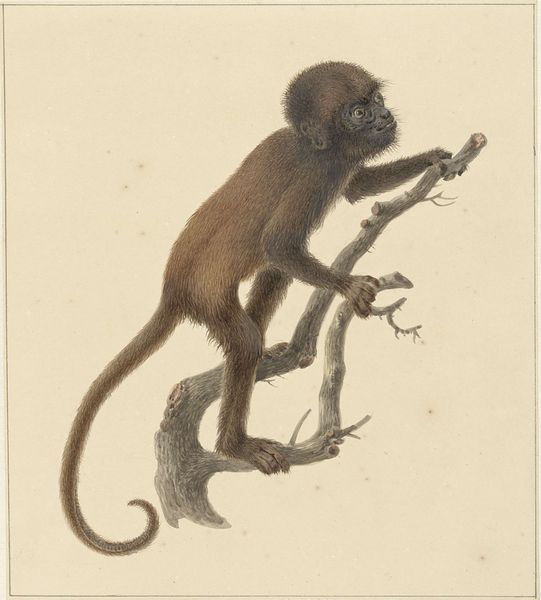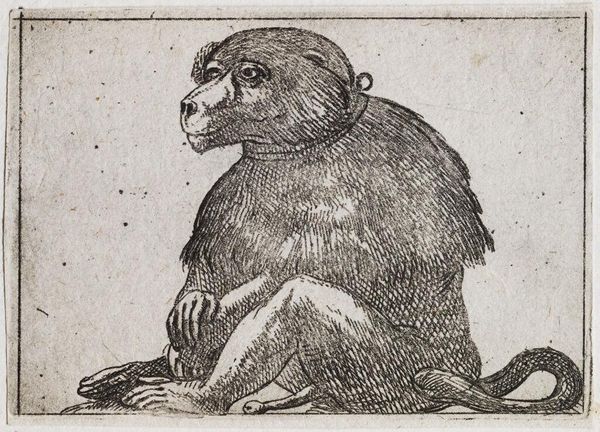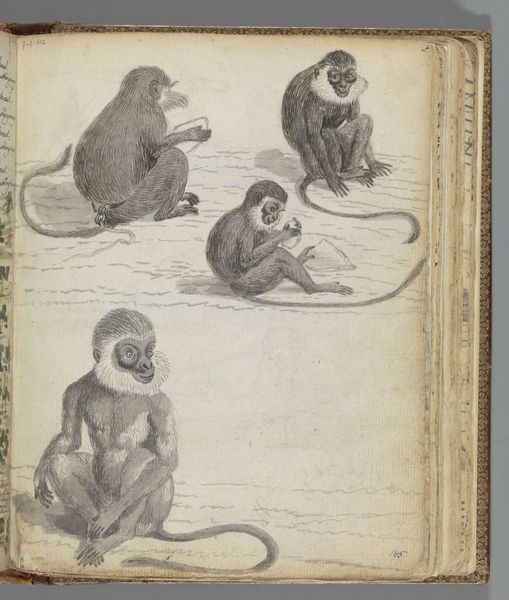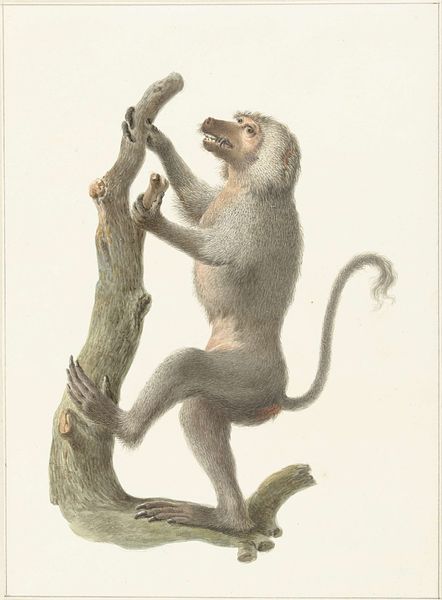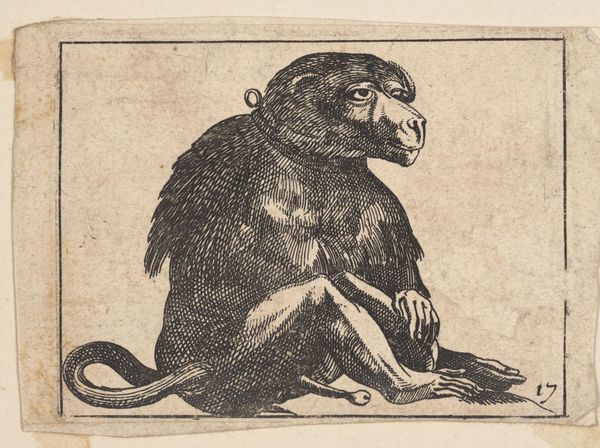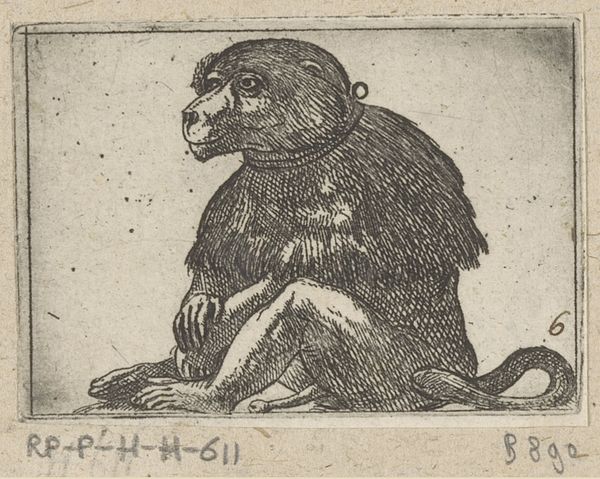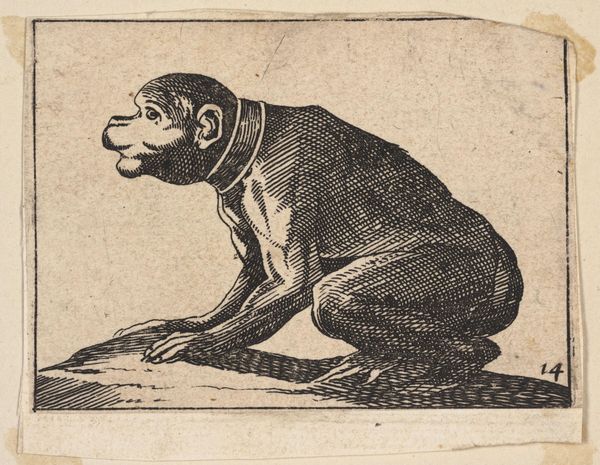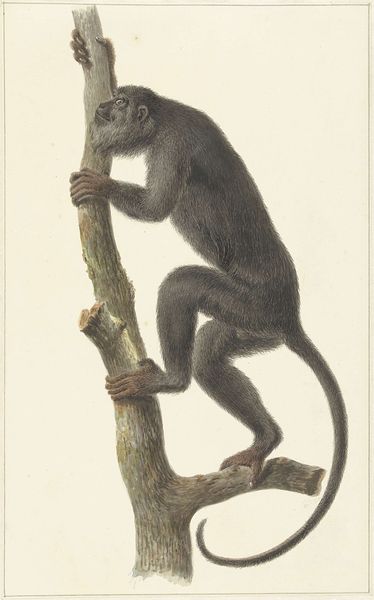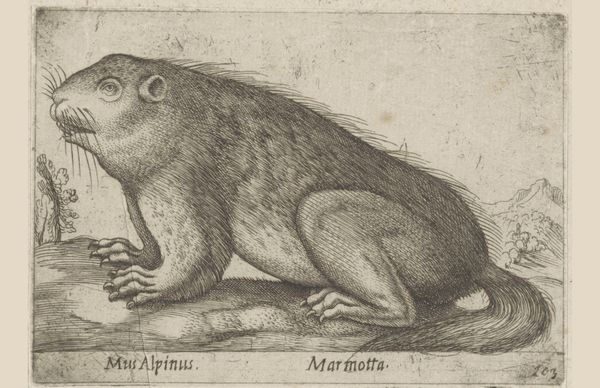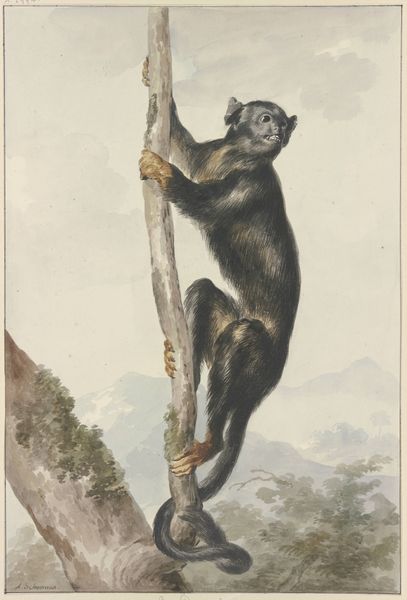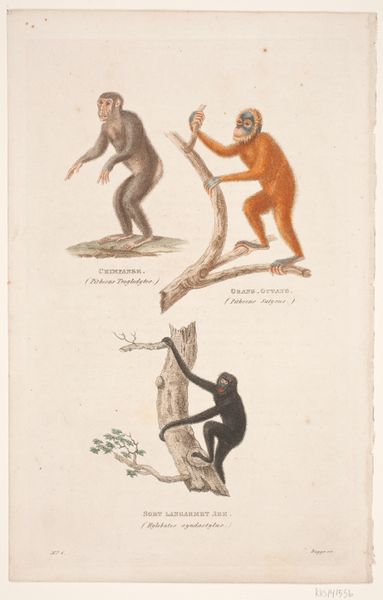
drawing, coloured-pencil, watercolor
#
portrait
#
drawing
#
coloured-pencil
#
landscape
#
watercolor
#
coloured pencil
#
academic-art
#
watercolor
Dimensions: height 660 mm, width 480 mm, height 361 mm, width 293 mm, height 318 mm, width 293 mm
Copyright: Rijks Museum: Open Domain
Editor: This is "Papio ursinus (Chacma baboon)," a drawing from 1773-1786 by Robert Jacob Gordon. It combines watercolor and coloured pencil. I’m immediately struck by how carefully the artist has rendered the baboon's fur and the landscape in the background. What are your initial thoughts on the piece? Curator: A close inspection reveals Gordon's meticulous technique. Note the careful cross-hatching used to delineate the form of the baboon. Consider how the texture and weight are rendered through subtle variations in line and color, achieving an almost tactile quality. Editor: So, you're focusing on the formal elements rather than, say, its historical significance as a scientific illustration? Curator: Precisely. Let’s observe the composition: the baboon is centrally positioned, commanding the viewer's gaze. Its seated posture creates a pyramidal form, lending stability to the image. The soft watercolor washes used for the landscape contrast with the more defined linework of the animal, highlighting the subject's form through visual separation. Editor: I see. It’s almost like the background is there to further emphasize the baboon's presence. What about the color palette? It seems quite muted. Curator: The earth tones contribute to the work's overall naturalistic feel. Notice how the limited color range—browns, greens, and blues—works to create a harmonious balance, guiding the eye smoothly across the composition. This harmony enhances the serene atmosphere despite the strangeness of the primate. How do you react to this chromatic arrangement? Editor: Now that you point it out, the limited palette actually amplifies the textural contrasts between the baboon's fur and the smoother landscape. I originally missed that detail! Curator: Exactly. By studying these formal elements, we uncover layers of meaning in Gordon’s choices, which in turn shapes our understanding of the work. Editor: Thank you! I am walking away with a new appreciation for it.
Comments
No comments
Be the first to comment and join the conversation on the ultimate creative platform.
